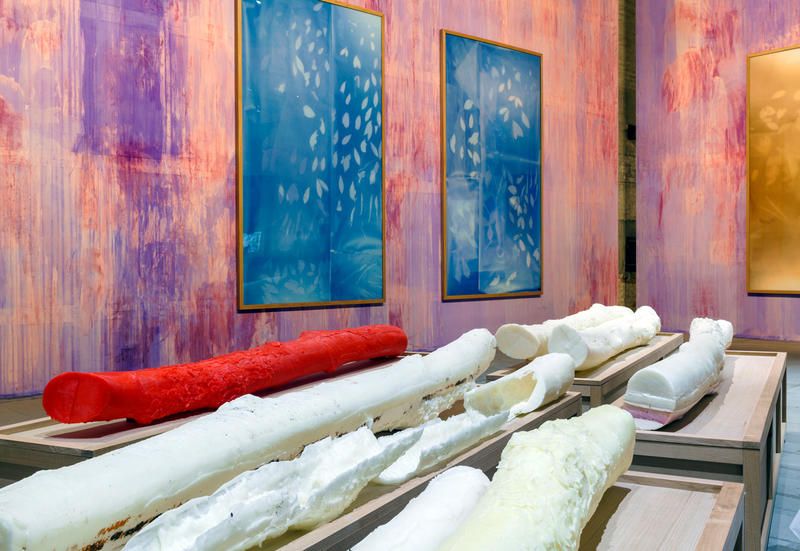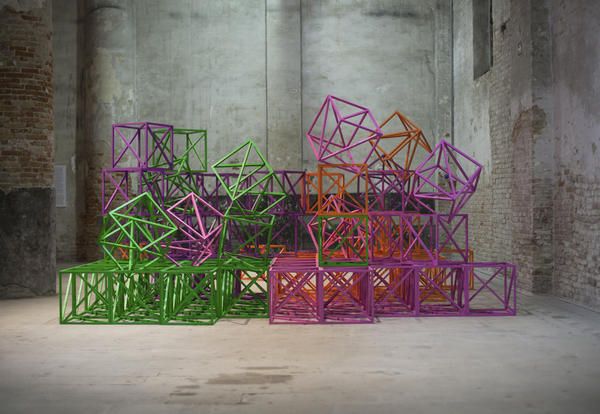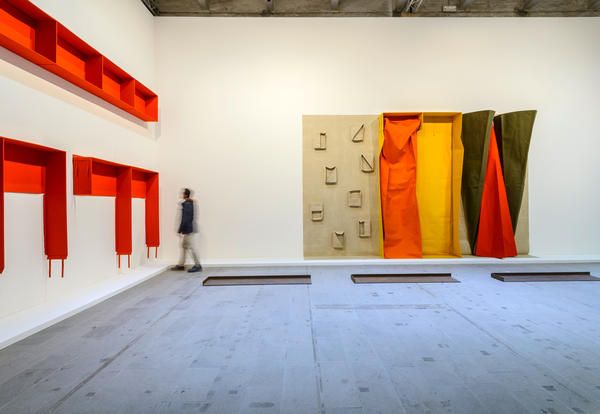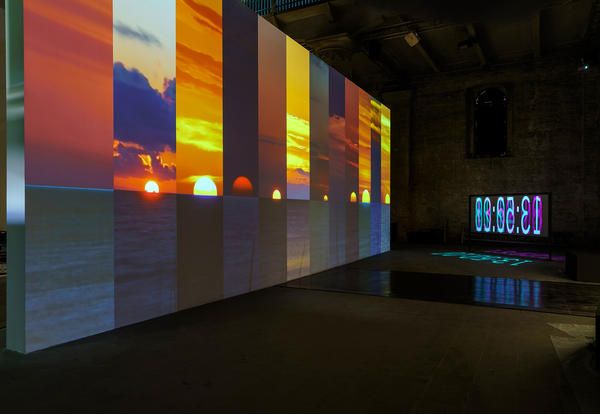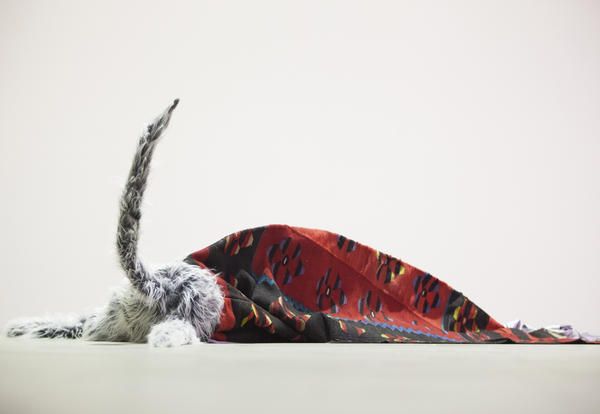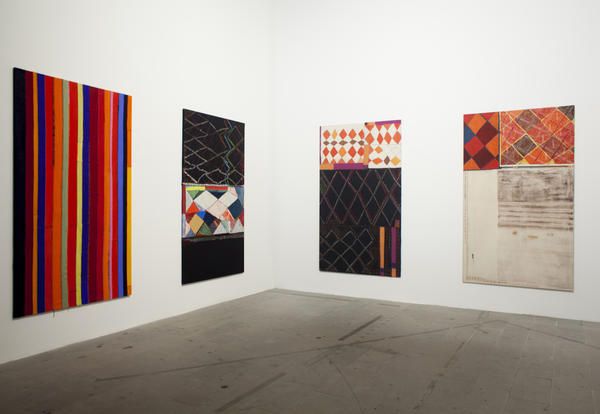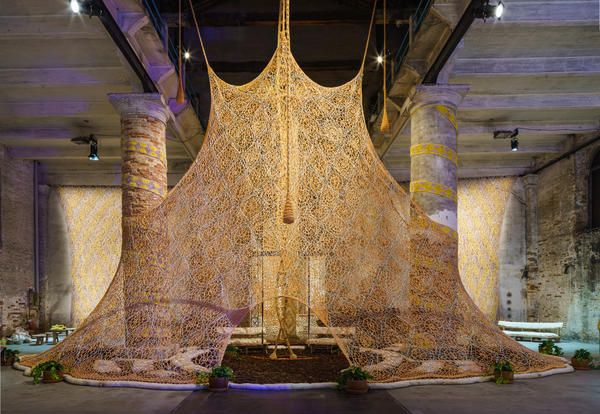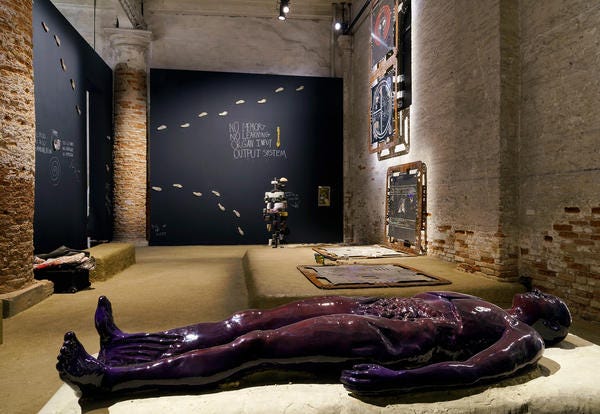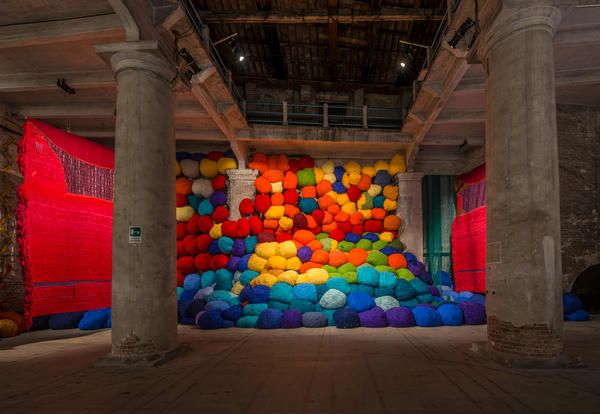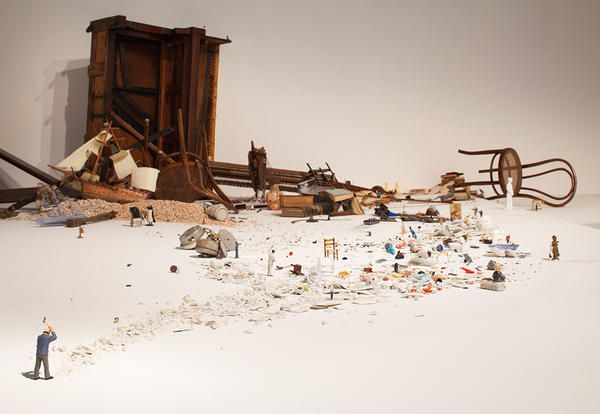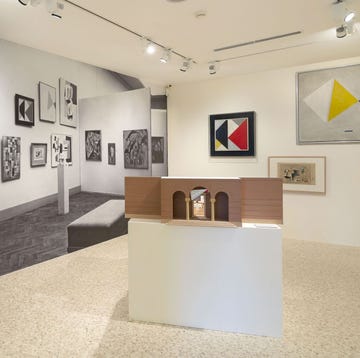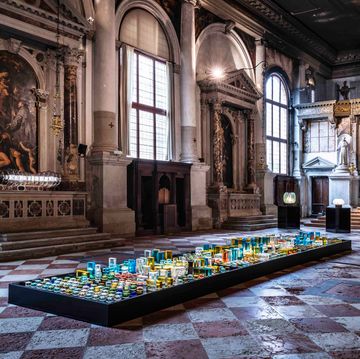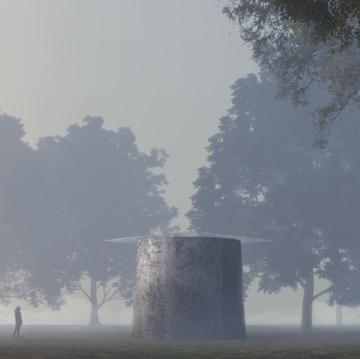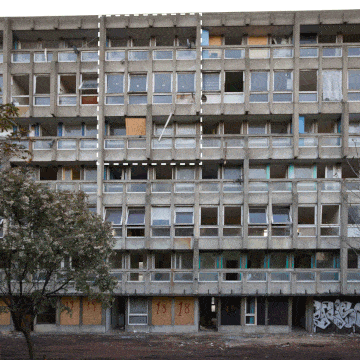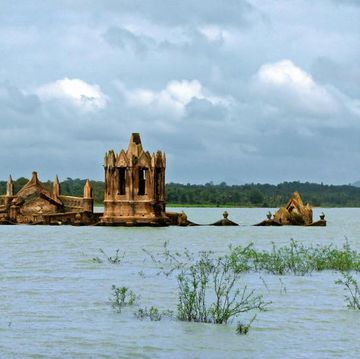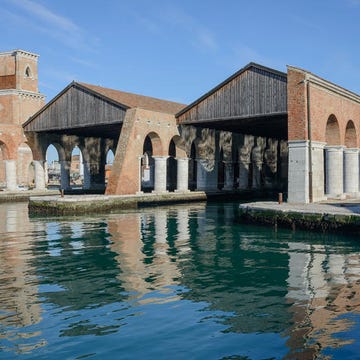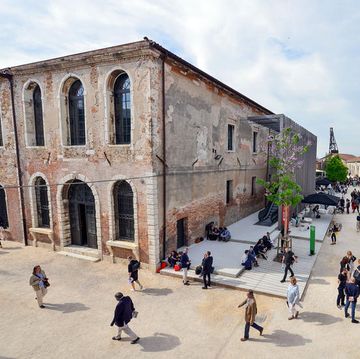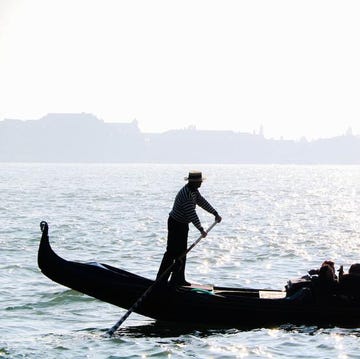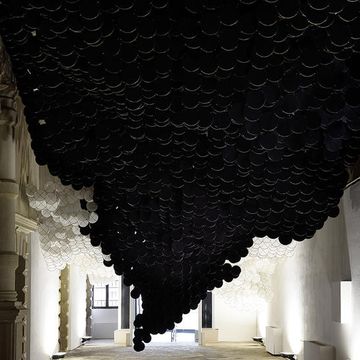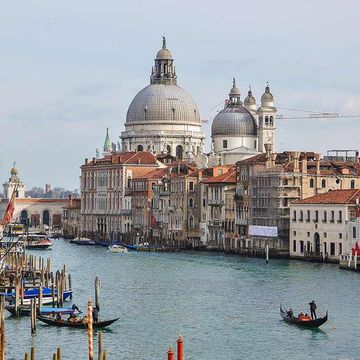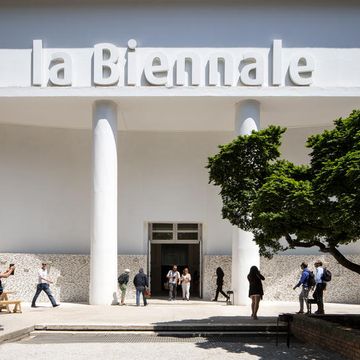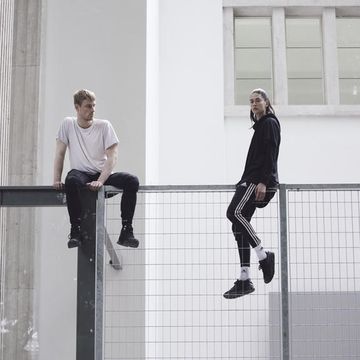Venice Biennale 2017 Viva Arte Viva, curated by Christine Macel, is not a single all-encompassing exhibition: between the Central pavilion at the Giardini and the Arsenale runs a long narration going through art in all its variants. Before revealing what to see at the Arsenale during this Venice Biennale, we’ll tell you how the Biennale Arte 2017 was conceived.
Macel divided the international exhibition into nine inter-connected trans-pavilions – two in the Central Pavilion and seven in the Arsenale – with no walls or style change between them: as visitors follow the route, they are intended to feel stirred, to experience a crescendo of emotions, among colours, installations, videos, oversize sculptures, performances, and innovative materials. Macel’s message is a wish of long life to a kind of art that can only be understood through the lives of the artists themselves.
Here is what you don’t want to miss at the Arsenale venue during this year’s Venice Biennale. From the Corderie to the lagoon calm of the Giardino delle Vergini.
The Pavilion of the Common
In the first pavilion at the Arsenale, dedicated to community and the role of collective consciousness, the installation Zero to Infinity in Venice by Pakistani artist Rasheed Araeen welcomes visitors: wooden cubes in wireframe with fluorescent colours can be freely moved to create always different spaces and architectures: an action against symmetry and formal minimalism.
Anna Halprin, a beautiful ninety-six-year-old woman, invites us to join her circular universal dance: Planetary Dance is a gesture, a common movement that expresses an intention of peace and joy for the whole world. Franz Erhard Walther of Germany– Golden Lion for best artist at Viva Arte Viva – puts on display three maxi works in wood and cotton realised between 1983 and 1986: large architectural volumes with vivid colours invite visitors to enter them, to wrap themselves in and imagine potential uses and functions for the structures. In the mind of the award-winning artist, it’s the body that completes his work.
The Pavilion of the Earth
The Pavilion of the Earth delves into the subjects of environment and ecology. The Tyranny of Consciousness video installation by Charles Atlas – recipient of a special mention of the jury - shows simultaneously forty-four sunsets marked by a big digital watch during an 18-minute countdown. At zero hour, in the darkness of the room, the famous New York drag queen Lady Bunny appears on the screen singing a disco song: the soundtrack of the end of the world.
Albanian artist Petrit Halilaj – awarded a special mention of the jury - with Do you realise there is a rainbow even if it’s night!? Packs the Corderie with sculptures made of carpets and fabrics from the Balkan tradition reproducing gigantic moths. The nocturnal insect is the symbol of change, of the revelation of one’s identity, and, at the same time, a declaration of love for one’s country.
The Pavilion of Traditions
The Pavilion of Traditions gathers together artists involved in the protection and update of artisanal knowledge. Carpets by Spanish artist Teresa Lanceta are one example. She reinterprets Moroccan embroidery creating surfaces in wool and cotton enriched by very colourful weaves and geometrical shapes: weaving, the result of collective work, is the material and tangible translation of ancestral memory.
Fabric, the true star of this Biennale Arte, is also the favourite support of Francis Upritchard,who upholsters his sculptures with ethnic clothing of excellent quality and impeccable cut: Islamic monks, actors from the Kabuki theatre, Harlequins, Maori warriors, and native Americans. The anthropological collection by Upritchard underlines how the act of collecting means, in reality, the fear of being forgotten in a globalised world swallowing ancient cultures.
The Pavilion of the Shamans
The Pavilion of Shamans, like the following one dedicated to Dionysian, is pervaded by art’s magic and spiritual, cathartic power. The installation Um Sagrado Lugar (A Sacred Place) by Brazilian Ernesto Neto is a suspended majestic curtain characterised by a twined organic weave in voile of tinted cotton in natural colours that fills the whole space of the Corderie. The work is a moment of sharing – visitors are invited to enter and learn the rituals of Huini Kuin Indians from the Amazon Forest. Recovering the awareness of indigenous people and the trans-mysticism expressed in sacred healing ceremonies becomes the cure of the ailments of contemporary society.
The Dionysian Pavilion
The supernatural dimension is evoked in the Dionysian Pavilion, where sacred and profane blend together elegantly in a series of works investigating erotic provocation and blasphemy in art. If Pauline Curnier Cardin portrays Bernadette as not so saintly in the hilarious video-installation Grotta Profunda, Approfundita, Mariechen Danz creates a disturbing space, where the Dionysian essence of the dismemberment of the body – like in the tragic myth of the Greek god – becomes a moment of reflection about the eternal change of nature and geography, the transience of things and the endless expression of languages. The work by Huguette Caland is instead very ironic; she creates women’s clothing with a poetic and playful style and astute sexual allusions.
The Pavilion of Colours
The Pavilion of Colours was conceived by Christine Macel as the summary of all previous pavilions, before the last chapter. The Pavilion of Colours is an explosion of light, a firework – as Macel herself described it; the oversize sculpture in natural and synthetic fibres Scalata al di là dei terreni cromatici / Escalade Beyond Chromatic Lands by the American Sheila Hicks dominates the scene: a protean assembly with vivid colours illuminates the Corderie, inviting visitors to touch the fabrics, to lean, and to interact with one another. The work by Hicks is a mix of design, architecture, art, and spontaneous performance produced by voluminous hanks expressing an “impartial weaving”, to quote Hicks, capable to activate, just because of its being imperfect, our inner child.
The Pavilion of Time and Infinity
Metaphysics of art is the core theme of the Pavilion of Time and Infinity. What kind of a time are we living in is the question artists gathered here ask themselves: a continuous present, a past repeating itself, or a near future containing actual events and memories? Edith Dekyndt with her performance–installation One Thousands and One Night tries to capture the infinity of time: a carpet of dust illuminated by a moving beam of light is constantly swept by a broom to make sure that the fleeting and impalpable particles of dust remain always lit. But time cannot be stopped...
Liliana Porter creates a very powerful scene in El hombre con el hacha y otras situaciones breves, Venecia 2017, where a miniature figurine of a man with an axe seems to start a chain of disastrous events involving the small and the large scale. Gunfights, chases, broken vases, pianos that fall from above: where does the action begin and end?
The poetry of golden ceramic drops lying on black metal plates pervades the whole room dedicated to Chinese artist Liu Jianhua, who, with Square, reduces shapes to the essential and freezes in the solid state the liquid matter stopping the physico-chemical transformation.
Finally, Polish artist Alicja Kwade creates a labyrinthine architecture in steel and glass for her WeltenLinie, where sculptures of different materials (stone, bronze, aluminium, and wood) follow each other, and mirror and transform into one another, confusing visitors and making them unable to recognise their position and the logic of the maze: the space–time continuum follows the rules of a limit that inexorably tends to infinity.
May Art live forever! Long live Art, long live! Viva Arte Viva!
– All photos: 57. International Art Exhibition - Venezia Biennale, Viva Arte Viva, courtesy of La Biennale di Venezia –
Opening Photo: THU VAN TRAN, THE RED RUBBER, 2017.
